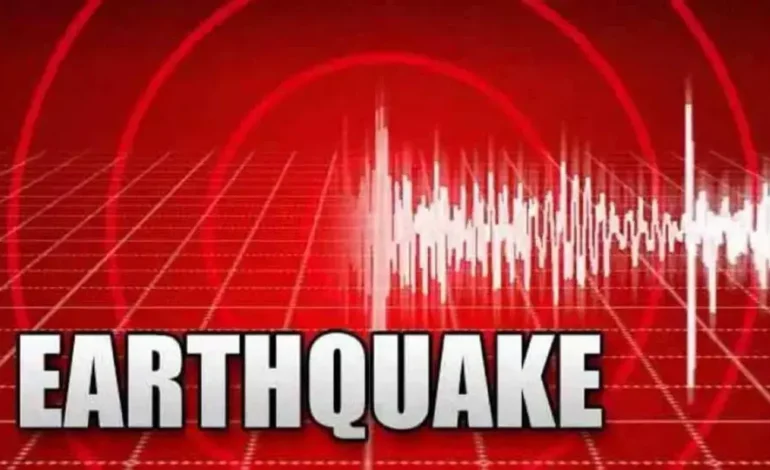
Shallow 3.6 Magnitude Earthquake Jolts San Jose, California: Early Morning Tremor Rattles Residents in East Foothills, Milpitas, and San Jose – Minimal Damage Reported but Raises Seismic Preparedness Concerns
In the early hours of the morning, a sudden and shallow earthquake with a preliminary magnitude of 3.6 struck near San Jose, California, causing a brief but perceptible tremor that was felt by many in the surrounding areas. The quake, which occurred at a depth of 5.2 miles, created a sensation of intense shaking despite its relatively modest magnitude. This event has once again brought the topic of seismic preparedness to the forefront for residents and authorities alike.
Immediate Reactions and Initial Impact
The tremor hit just a few minutes ago, catching many residents off guard. People in East Foothills, Milpitas, and San Jose reported feeling a slight vibration, enough to wake some from their sleep and cause momentary alarm. Local resident Maria Sanchez from Milpitas shared her experience: “It was just a quick jolt, nothing too alarming, but definitely enough to make you pause and check on everyone.”
As is common with earthquakes, the immediate response involved a mix of confusion and quick action. Some residents instinctively checked on family members and pets, while others quickly turned to social media to see if others had felt the tremor. The hashtag #SanJoseEarthquake quickly started trending, with people sharing their experiences and checking in with loved ones.
Expert Analysis and Seismological Insights
Seismologists at the United States Geological Survey (USGS) were quick to provide preliminary data about the earthquake. According to Dr. Laura Jenkins, a seismologist at the USGS, “The earthquake struck at a shallow depth of 5.2 miles, which is why the shaking felt more intense for those near the epicenter. Shallow earthquakes, even those with lower magnitudes, can often be felt more widely and intensely than deeper ones.”
Dr. Jenkins further explained that while a 3.6 magnitude earthquake is considered minor and typically does not cause significant damage, the shallow depth and proximity to urban areas made this quake more noticeable. She emphasized the importance of understanding these factors when assessing the impact of seismic events.
Minimal Damage but Heightened Awareness
Early reports indicate that the earthquake caused little to no structural damage. However, local authorities, including the San Jose Fire Department and emergency services, conducted immediate assessments to ensure public safety. Minor incidents, such as objects falling off shelves and small cracks in older buildings, were reported, but no major injuries or structural failures have been confirmed.
Emergency services were put on alert, and the San Jose Police Department increased patrols in affected areas to assist with any potential aftershocks or related issues. The quick response from local authorities has been praised, with officials reminding residents of the importance of earthquake preparedness.
Community Response and Preparedness Measures
In the aftermath of the earthquake, community leaders and public officials have reiterated the importance of preparedness. San Jose Mayor Lisa Hernandez held a press conference to address the community’s concerns: “Today’s earthquake is a reminder of the seismic activity we live with here in California. While we’re grateful that this event did not cause significant damage, it underscores the need for ongoing preparedness and vigilance.”
Local schools, businesses, and community centers have been encouraged to review their emergency plans and ensure that all safety measures are up-to-date. Earthquake drills and preparedness workshops are being scheduled to help residents understand what to do during and after an earthquake.
The California Earthquake Authority has also launched a public awareness campaign, emphasizing the “Drop, Cover, and Hold On” protocol as a crucial response during an earthquake. The campaign includes distributing educational materials, hosting community events, and leveraging social media to reach a wider audience.
Seismic Preparedness in San Jose
San Jose, like much of California, is no stranger to seismic activity. The region sits on several significant fault lines, including the San Andreas Fault, making it prone to frequent earthquakes. As such, seismic preparedness is a critical aspect of public safety and community planning.
Building Resilient Infrastructure
One of the key strategies in mitigating the impact of earthquakes is ensuring that infrastructure is built to withstand seismic activity. San Jose has implemented strict building codes that require new constructions to adhere to earthquake-resistant standards. Retrofitting older buildings has also been a priority, with initiatives aimed at strengthening structures that were built before modern seismic codes were established.
City Engineer Mark Thompson explained, “We’ve made significant progress in retrofitting vulnerable structures and ensuring new buildings meet rigorous safety standards. However, the work is ongoing, and we must continue to invest in our infrastructure to protect our residents.”
Community Preparedness Programs
In addition to strengthening infrastructure, community preparedness programs play a vital role in ensuring public safety. San Jose’s Office of Emergency Management (OEM) offers a variety of resources and training programs designed to help residents prepare for and respond to earthquakes.
These programs include:
- Community Emergency Response Team (CERT) Training: This program educates volunteers about disaster preparedness and basic disaster response skills, such as fire safety, light search and rescue, and medical operations.
- Earthquake Preparedness Workshops: These workshops provide residents with practical information on how to prepare their homes and families for an earthquake. Topics covered include creating emergency kits, developing family communication plans, and understanding earthquake insurance.
- ShakeOut Drills: San Jose participates in the annual Great California ShakeOut, a statewide earthquake drill that encourages residents to practice their earthquake response procedures.
Public Awareness and Education
Public awareness and education are critical components of seismic preparedness. The San Jose OEM regularly updates its website and social media channels with information on earthquake preparedness, including step-by-step guides and checklists.
Schools in the San Jose Unified School District also incorporate earthquake education into their curriculum. Students learn about the science of earthquakes, the importance of preparedness, and how to respond during an earthquake. These lessons are reinforced through regular drills and hands-on activities.
The Role of Technology in Earthquake Preparedness
Advancements in technology have also played a significant role in improving earthquake preparedness and response. Early warning systems, such as ShakeAlert, provide valuable seconds of warning before an earthquake’s shaking begins. This can give residents and businesses crucial time to take protective actions, such as dropping, covering, and holding on, or pausing critical operations.
ShakeAlert is a collaborative effort involving the USGS, state emergency management agencies, and universities. The system uses a network of seismic sensors to detect earthquakes and send alerts to users in affected areas. These alerts are delivered through various channels, including mobile apps, public alert systems, and integrated technologies in infrastructure and transportation networks.
Conclusion: A Community United in Preparedness
The 3.6 magnitude earthquake that struck near San Jose serves as a reminder of the region’s seismic activity and the importance of preparedness. While the immediate impact was minimal, the event has reinforced the community’s commitment to seismic safety and resilience.
Through a combination of resilient infrastructure, comprehensive community preparedness programs, public awareness and education, and advanced technology, San Jose is working to mitigate the risks associated with earthquakes and protect its residents.
As Mayor Hernandez aptly stated, “We cannot prevent earthquakes, but we can prepare for them. By working together and staying vigilant, we can ensure that our community is ready to face whatever challenges come our way.”
In the coming weeks, San Jose will continue to assess the recent earthquake’s impact and implement any necessary measures to enhance preparedness. Residents are encouraged to stay informed, participate in preparedness programs, and take proactive steps to safeguard their homes and families.
Ultimately, the spirit of resilience and cooperation will guide San Jose as it navigates the challenges of living in an earthquake-prone region. The lessons learned from this event will strengthen the community’s resolve and preparedness, ensuring a safer future for all.


